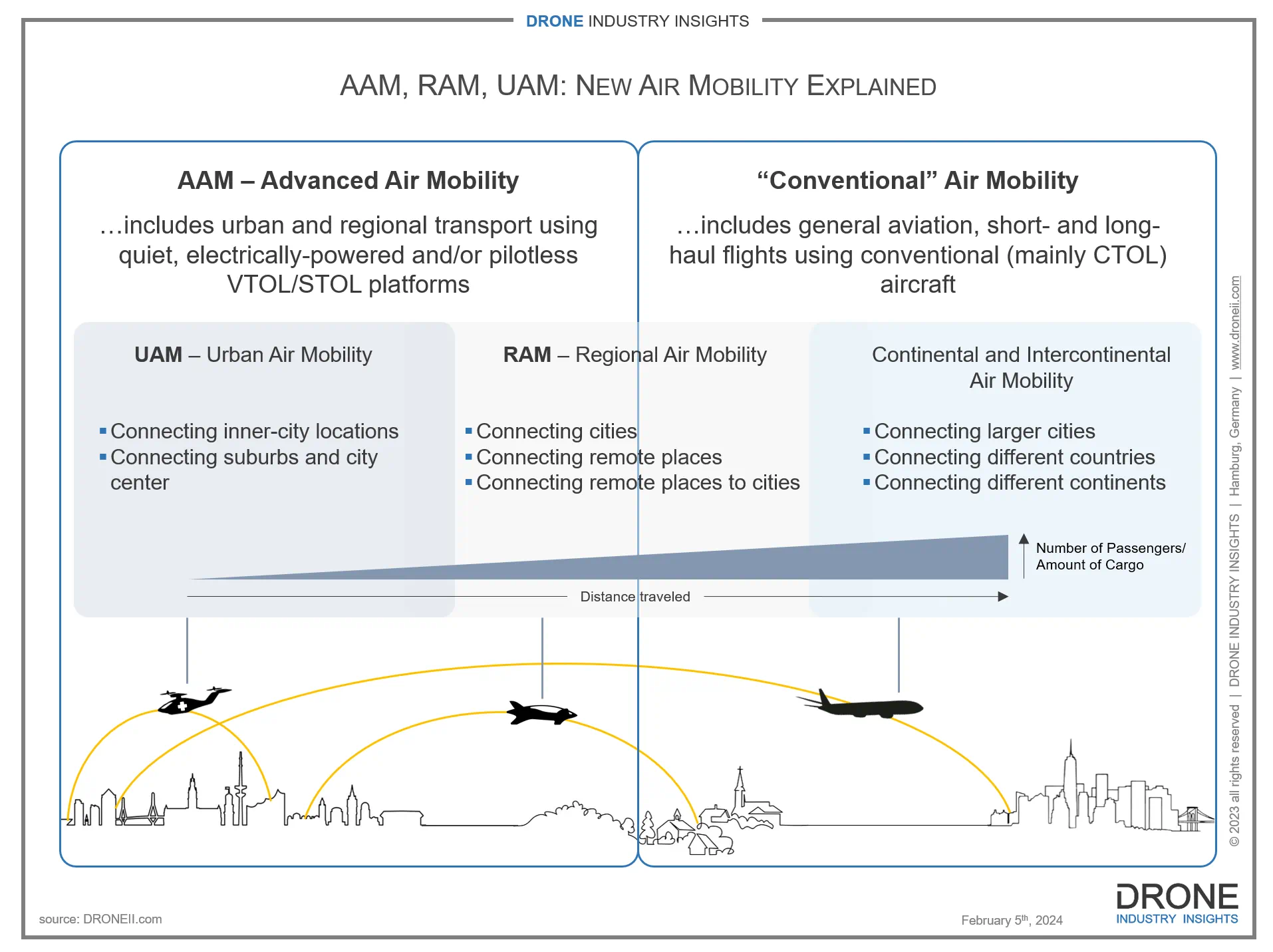RAM, often misunderstood, refers to Regional Air Mobility (though some also use it for Rural Air Mobility). While there is no definitive meaning for RAM, understanding it as an extension of UAM to cover regions beyond suburbs is perhaps the most useful. It addresses the transportation needs of villages, small towns, islands, and regions separated by challenging terrain. Existing modes of transportation like helicopters and small planes have limitations in terms of capacity, emissions, and infrastructure requirements. RAM offers a solution that can surpass these limitations, leveraging new technologies like eVTOLs and passenger drones. Examples of RAM projects include Lilium's plan to connect Bavarian cities and initiatives to connect islands in Greece or the Maldives among others.
AAM encompasses both UAM and RAM and refers to a new mode of transportation that utilizes quiet, electrically powered, and potentially autonomous platforms. Safety, public benefit, adverse impacts, and integration are the key considerations for the integration of AAM into communities and existing infrastructures. Safety and security measures are crucial, as large eVTOLs must prove their technical reliability. AAM also holds the promise of expanding travel options, creating economic opportunities, and connecting rural areas. However, concerns about pollution, privacy, and limited access must be addressed. Integration into the current transportation landscape is important, considering accessibility, grid capacity, and social equity.
Overall, passenger transportation and cargo transport are the primary markets for AAM. By reducing travel times and enhancing mobility options, AAM has the potential to revolutionize urban and regional transportation. Compared to other transport alternatives, AAM requires relatively smaller capital investment, making it scalable. The applications of AAM extend geographically and temporally, with lasting impacts expected on urban and regional mobility.
In summary, as the future of transportation unfolds, UAM, RAM, and AAM play crucial roles in advancing air mobility. These concepts offer innovative solutions to address congestion, improve efficiency, and connect communities. By embracing technologies like eVTOLs, we can reimagine how we travel in both urban and regional spaces.







